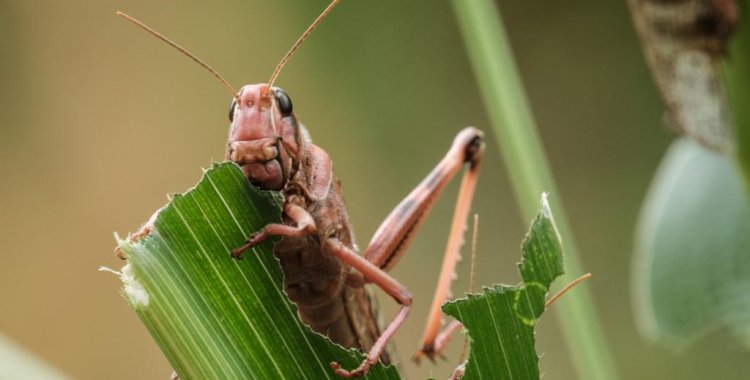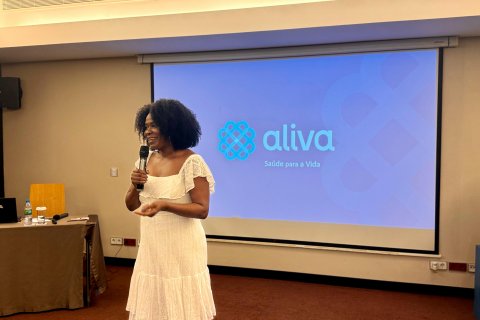António de Assis was speaking at the opening of a 'webinar' on Monitoring and Control of the Locust Plague, promoted by his ministry and the Food and Agriculture Organization of the United Nations (FAO).
The governor said that after the beginning, in 2020, in Cuando Cubango, the plague of red locusts coming from Southern African countries, namely the neighboring Republics of Namibia and Zambia, has already spread, this year, since March to Cunene, and in April to Benguela and Namibe, and is currently in Huila.
"We are living in times that require all of us to create adaptation mechanisms and greater resilience to safeguard the food and nutritional security of our populations," said the minister.
According to António de Assis, since the first events, the Interministerial Commission to Combat the Plague of Locusts, created by the President, has been working in the field with the teams monitoring the phenomenon.
Data made available this Tuesday indicate that in Cuando Cubango, a total of 1280 families, equivalent to 6400 people, have been affected.
In the province of Cunene, 908 ploughs, equivalent to the same number of families, were destroyed, with a total of 5448 people affected, while in Namibe 38 families were affected and the same number of devastated ploughs.
Data on the situation in the provinces of Huíla and Benguela are not yet available, and the civil protection services are encouraging the population to use traditional methods to ward off the locusts, such as placing cans on bushes, burning tires and sound vibrations to disperse the insects.
The minister said that Angola has the technical support of FAO and the international organization for the control of red locusts in Central and Southern Africa, all committed "in the control and combat" of this evil, "which destroys the production fields and consequently the results of the recommended agricultural campaign".
"Aware that the available means are scarce, and for all the actions that we have been developing, we are convinced that together we are able to defeat this great enemy of agricultural production," he stressed.
In turn, the FAO representative in Angola, Gherda Barros, said that the organization is committed to its role as technical facilitator in this process led by the Angolan authorities.
Gherda Barreto revealed that FAO has been monitoring more than 16 million square kilometers affected by almost nine species of this pest.
"As FAO we will continue with a training process, which has already been conducted for months by the ministry, with FAO monitoring, and now we will try to strengthen capacities and try to share with several 'experts' at a virtual level," explained Gherda Barros, stressing that "the idea is to advance at the field level, with a more extensive and practical training process."
During the presentation it was advanced that the pest continues to create constraints in terms of food security of the populations, affecting almost one million hectares of land in southern African countries, according to the working group and food and nutrition security.
According to the FAO consultant, Domingos Panzo, in Angola, crops and pastures in the provinces of Cuando Cubango and Cunene have been damaged, with recent reports of the same challenge in the provinces of Benguela, Huila and Namibe.
The technician stressed that the outbreak of locusts continues in the region, particularly in Angola, Namibia, Botswana, Zimbabwe and Zambia, and in the Portuguese-speaking country the creation of an application, the 'eLocust', capable of monitoring the plague via satellite is underway.
Domingos Panzo stressed that in order to face this plague resources from the United Nations and the Belgian Government have already been mobilized, which served as support for the actions, together with the resources that the Angolan Government made available for the fight against the locust plague.
In the near future the training on the 'eLocust' application will take place, which will allow to monitor in the field the plague situation and report to the locust management and control unit.
The FAO consultant argued that additional funds should be raised, noting that Angola is included in a sub-regional portfolio of 1.5 million dollars, still under negotiation.
The instability of the weather, namely alternating drought and floods are factors that can influence the migration of locusts, which prefer sandy soils to lay their eggs. 40 million insects gathered in one square kilometer can consume, in just one day, quantities for 350 thousand people.
In the 'webinar', topics on the "Regional and National Overview of Locust Plague", "Insect Biology", "Monitoring Locusts", "Locust Control", "Correct Use of Personal Protective Equipment", "Pesticide Management", "eLocust Application" and the "Role of Civil Protection in Monitoring Locust Plague" were presented.







